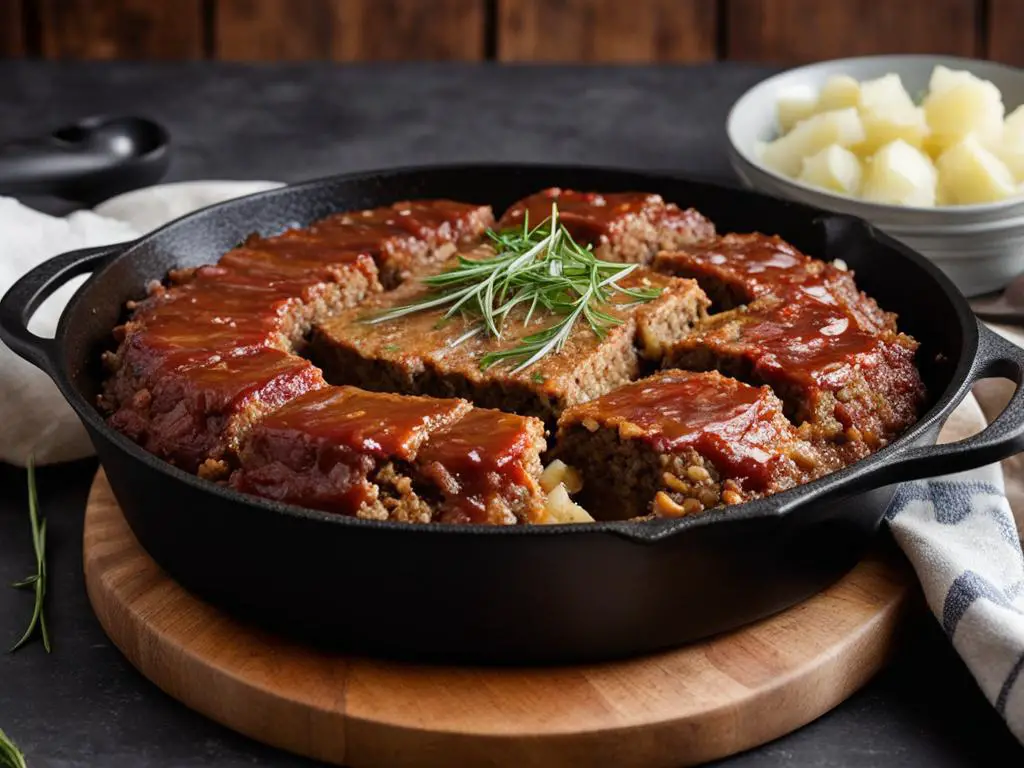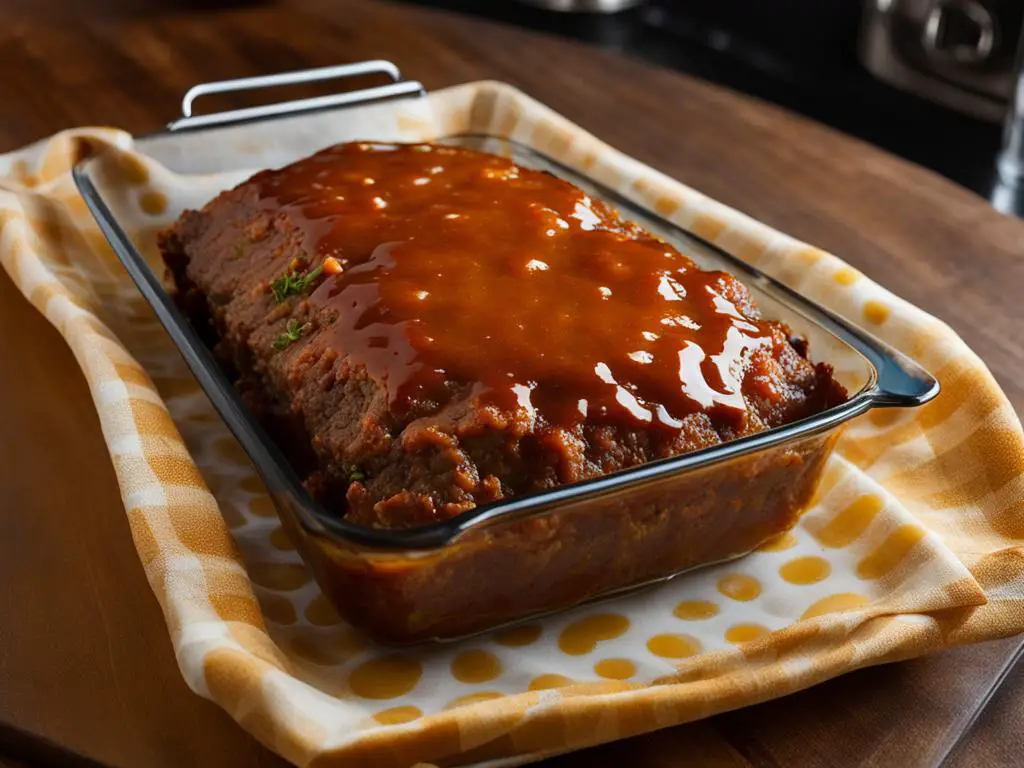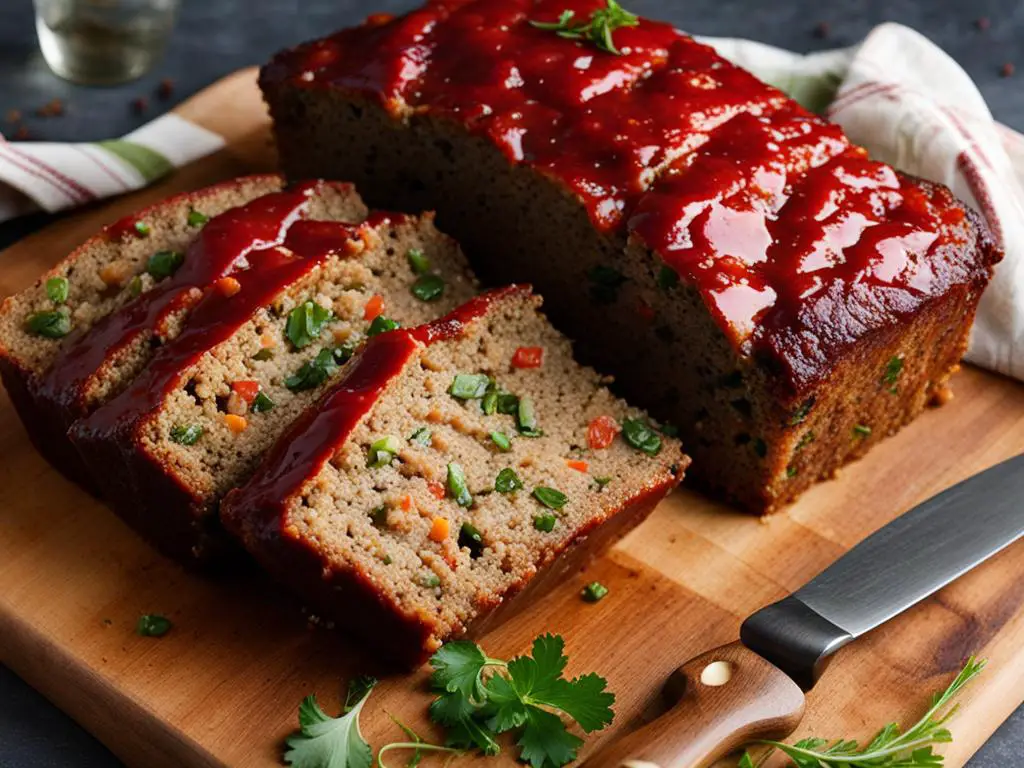Are you curious about the classic dish that’s graced dinner tables for decades? If you’ve ever wondered, “What is meatloaf?” you’re not alone. Meatloaf is a beloved comfort food made from ground meat mixed with other ingredients, such as breadcrumbs and spices, then baked or smoked to perfection.
This hearty and versatile dish can be customized in countless ways, making it a favorite in households around the world. Join us as we explore the history, variations, and reasons why meatloaf remains a staple in so many cuisines.
What is Meatloaf?
When defining what meatloaf is, we’re really talking about the epitome of comfort food. It’s a savory concoction typically made from ground meat and other ingredients such as herbs, spices, and a binding agent like eggs or breadcrumbs.

This hearty mixture is shaped into a loaf and baked, resulting in a dish that’s deeply satisfying and reminiscent of home-cooked meals. Meatloaf epitomizes American cuisine’s ingenuity, offering a canvas for creativity and personal touches that render it a perennial favorite across the nation’s dinner tables.
Moreover, the versatility of meatloaf allows for countless variations and adaptations, from family heirloom recipes to inspired culinary creations. No wonder it has become a beloved comfort food, enjoyed by many generations across the United States. There are so many side dishes that can be served with meatloaf to complement its hearty flavors, see our best pairings for meatloaf.
To exemplify the versatility of meatloaf, take a look at this table showcasing the range of possibilities when it comes to choosing ingredients:
| Ingredient Category | Classic Choices | Contemporary Variations |
|---|---|---|
| Ground Meat | Beef, Pork, or a Mix | Turkey, Chicken, Plant-Based Meats |
| Herbs and Spices | Parsley, Oregano, Thyme | Cilantro, Rosemary, Chipotle |
| Binding Agent | Breadcrumbs, Eggs | Quinoa, Flax Seed, Chickpea Flour |
| Sauces and Toppings | Ketchup, BBQ Sauce, Gravy | Sriracha, Pesto, Mango Chutney |
Meatloaf’s Rise to Popularity
Meatloaf has long been a comforting staple in American pop culture, cherished across generations. This hearty dish got its start during the Depression era, helping families stretch their food budget while still filling their bellies. As prosperity returned in the 1950s, meatloaf found a new home in bustling diners, becoming a beloved classic.
Its role in films and TV shows as the ultimate comfort food further cemented its status, often seen at family dinners and holiday gatherings, evoking warmth and nostalgia. Meatloaf’s enduring popularity not only showcases its role as a comforting staple but also connects generations with its familiar, homestyle appeal.
Exploring the Core Ingredients of Classic Meatloaf
So, what makes meatloaf the quintessential comfort food? Let’s examine the essential elements that make it an irresistible dish.

The Role of Ground Meat
Ground meat lays the foundation of a perfect meatloaf, and the type chosen will significantly impact the texture and flavor. Beef, pork, or a mix of both are popular options for a classic meatloaf. Leaner types like ground turkey or chicken can also be used for healthier variations.
The choice of ground meat will determine the loaf’s succulence and density, so consider your taste preferences while selecting the meat.
Binding Agents
Binding agents play a vital role in classic meatloaf recipes, ensuring structural integrity while infusing moisture. Breadcrumbs, crushed crackers, or oats are commonly used to hold the ground meat together.
Eggs, on the other hand, work as an additional binding element and impart juiciness to the dish. The right balance of these binding agents is crucial, as too much can result in a dense loaf, while too little might cause it to fall apart.
Herbs and Spices
Herbs and spices are the magicians of flavor in a meatloaf recipe, transforming it from ordinary to extraordinary. Common herbs and spices used in classic meatloaf recipes include garlic, onions, parsley, thyme, oregano, and paprika. These carefully chosen seasonings breathe life and character into the dish, enthralling palates with every bite.
The Debate: To Cover or Not to Cover Your Meatloaf
At the heart of the meatloaf debate lies the question of whether to cover your meatloaf when baking it. This seemingly simple decision can spark heated discussions among home cooks, as it impacts the final outcome of this classic dish.

Some argue that covering the meatloaf is key to locking in moisture for a tender and juicy result, while others champion uncovering the meatloaf to achieve a crusty, golden-brown exterior. As you navigate the art of baking meatloaf, here are some factors to consider.
- Cooking Time: Generally, a covered meatloaf requires a longer cooking time due to the trapped steam, whereas an uncovered one cooks faster as the heat directly reaches the surface.
- Sauces and Glazes: The choice to cover or uncover can influence how sauces and glazes interact with the meatloaf during baking, potentially affecting the dish’s flavor and consistency.
- Moisture Retention: A covered meatloaf benefits from the moisture generated inside, while uncovering allows for evaporation and potentially a drier result. Understanding your preferred texture is crucial when making this decision.
Covering or uncovering your meatloaf is a matter of personal philosophy when it comes to cooking. It usually has something to do with family traditions, what you want out of it, or just how you like your food.
Perhaps the best way to find your stance in this debate is to experiment with both methods and see which one creates the perfect meatloaf experience for you and your loved ones.
Related Article: Want to take your meatloaf to the next level? Pair it with another comforting classic with our Meatloaf and Mashed Potatoes recipe.
Meatloaf Around the World: Global Takes on an American Staple
The journey of meatloaf doesn’t end within the borders of the United States; it’s a globetrotter, with every culture lending its unique imprint. Let’s take a closer look at some international variations that showcase the versatility and status of meatloaf as a beloved dish everywhere:

| Country | Main Ingredients | Seasonings | Cooking Methods |
|---|---|---|---|
| Sweden (Köttbullar) | Beef, Pork | Allspice, Nutmeg, Onion | Pan-fried |
| South Africa (Bobotie) | Beef or Lamb | Curry Powder, Turmeric, Dried Fruit | Baked |
| Italy (Polpettone) | Beef, Pork, Veal | Parsley, Garlic, Parmesan | Baked |
| Germany (Frikadelle) | Beef, Pork | Onion, Marjoram, Mustard | Pan-fried |
| Greece (Soutzoukakia) | Pork, Beef, Lamb | Garlic, Cumin, Paprika | Baked |
| Middle East (Kibbeh) | Lamb, Beef | Mint, Cinnamon, Allspice | Deep-fried |
Fascinated by these diverse takes on meatloaf? Let these international interpretations inspire you to explore new approaches to this classic dish, adding a touch of global flair to your meatloaf-making repertoire.
From the aromatic spices of South Africa’s Bobotie to the comforting tastes of Italy’s Polpettone, there’s a world of global meatloaf offerings waiting to be discovered and enjoyed at your dining table.
Conclusion
Meatloaf is more than just a dish—it’s a slice of history that’s deeply rooted in American culture. From its humble beginnings as a thrifty meal during tough times to becoming a beloved comfort food, meatloaf has stood the test of time.
Whether you’re enjoying it in a classic diner or at home with family, meatloaf brings people together with its hearty flavors and nostalgic charm. So, next time you dig into a slice, savor the taste of tradition and the warmth of home-cooked goodness.
FAQ
How did meatloaf travel from Europe to America?
Meatloaf carries its European roots across the Atlantic, where its evolution was shaped by the immigrant influence of many cultures, particularly Germans. They brought their recipes which were infused with local flavors to create the meatloaf we know today.
Is meatloaf only made with beef?
No, meatloaf can be made with a variety of meats, including beef, pork, turkey, or a combination of these.
How can I make my meatloaf moister?
Adding moist ingredients like ketchup, mustard, or sautéed onions, or using a mix of meats, can help keep your meatloaf moist.
How has meatloaf evolved in modern times?
Modern twists on meatloaf include health-conscious variations with ingredients like lentils, turkey, or plant-based meats to cater to various dietary needs. Chefs and home cooks also experiment with creative fillings and toppings, keeping the meatloaf saga fresh and exciting.
Is meatloaf healthy?
Meatloaf can be part of a healthy diet when made with lean meats and nutritious additions like vegetables and whole grains.


